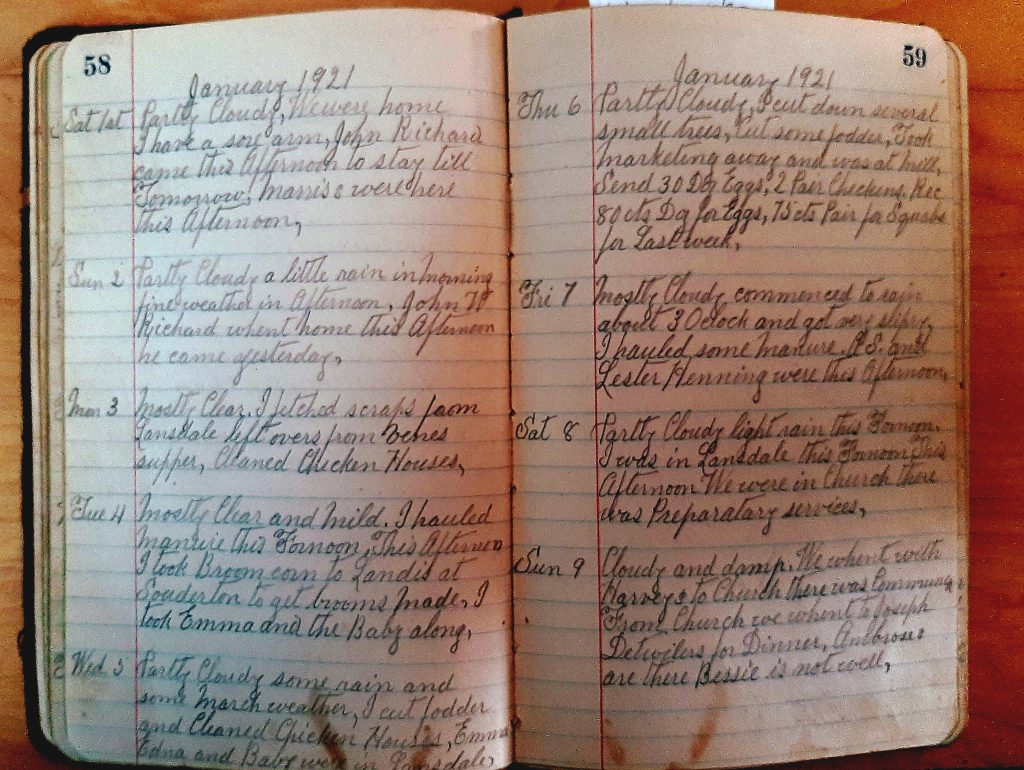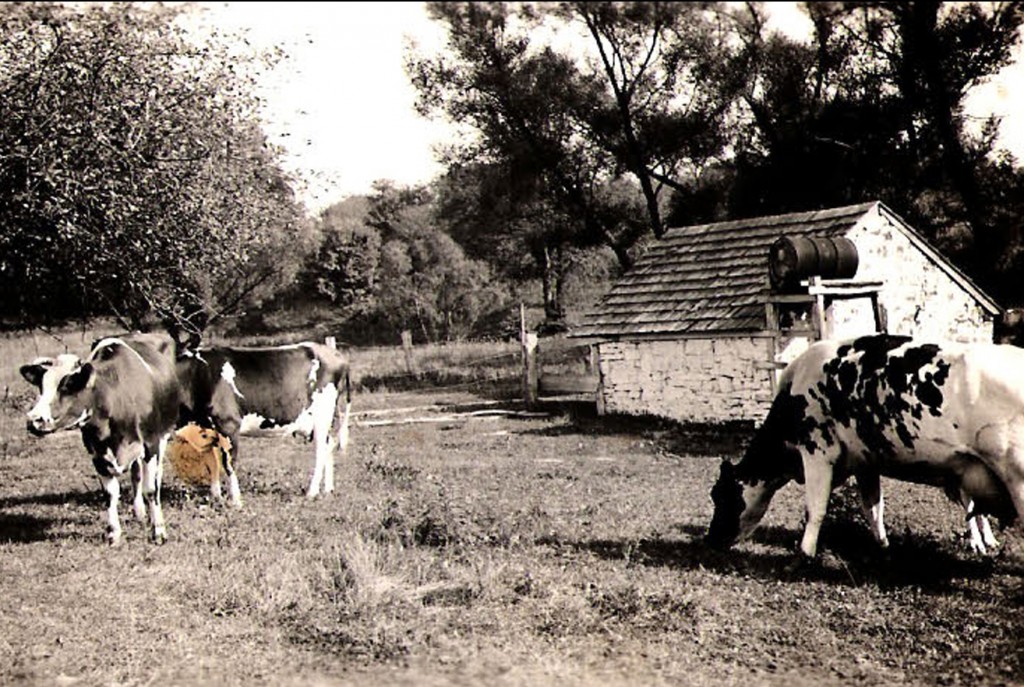The Morgan Log House is always researching and adding to its historic narratives regarding the house, its families, and associated larger historic contexts. Because family documents, like diaries, letters, receipts, newspaper advertisements, or budget books , pertaining to the property to not appear to have survived like , staff has to glean information about these subjects from other sources.
As we have previously noted in our January blog, we received a generous donation by Mr. Brian Hagey of William Leister’s diaries during our research on the local agricultural industry. Census records, diaries, local histories, tax records, and agricultural books are just some examples of sources that aid in providing a narrative regarding the Morgan Log House and the township’s agricultural history.

We can gather agricultural information about the farm and the larger surrounding area from the federal government during the nineteenth and twentieth centuries with the agricultural census of 1850, 1880, and 1927. Through this, we have been able to gather information and add that information to our narrative regarding the Morgan Log House and the township’s agricultural history.
Having done this research, we can say some things with some certainty:
The House and Farm in the Eighteenth Century, 1708-1799
The Morgan family owned the property from 1708 to 1741 and at its largest was 800 acres. Within the Morgan family’s occupation it was subdivided amongst Edward Morgan’s sons. Little documentation is known to have survived that relates to the early families who owned the property like the Morgans, Davids, Yeakels, and Cassels during the eighteenth into the early nineteenth centuries. However, the museum has an idea of what the farm was like in the mid-nineteenth into the twentieth centuries.
The House and Farm in the Nineteenth and Twentieth Centuries
Although the museum does not have specific documentation from the families related to the farm’s activities, the federal agricultural census provides a lot of information. These census records were taken in 1850, 1880, and 1927 and from these, the museum can get a glimpse of the size of the farm, its crops, livestock, products, and other elements. These records also show the different owners of the Morgan Log House from the latter half of the Cassel family’s ownership, to Frederick Bower’s ownership, and then as a tenant farm in the twentieth century.
Our volunteer, Caroline, was so gracious in transcribing these three census records and staff has been able to incorporate her work into the museum’s interpretations. Through her work, we can easily see how the farm fit in within the larger agricultural context of Towamencin Township.
At some point between the eighteenth and the mid-nineteenth centuries, the Cassel family likely ended their involvement in the fabric industry; Henry Cassel’s entry in 1850 shows no sheep on the farm or flax production. The farm consisted of 62 acres with 50 improved or worked acres, slightly larger than the township average of 46 acres. His farm was valued at $2,600- right at the township average, but he owned farming implements valued slightly above the average. He grew wheat, rye, Indian corn, oats, Irish potatoes, hay, and clover much like his neighbors. The farm was also producing butter, a common dairy product in the region during the mid-to-late-nineteenth century. He had two horses to work the farm, 8 dairy cows, 1 other cattle, and 3 swine. He may have had poultry on the farm since many farms during the mid-to-late-nineteenth century had poultry houses, but the census did not record poultry as part of its data collection.
Thirty years later, under Frederick Bowers’ ownership, the farm was recorded in the 1880 agricultural census. The census recorded not just the size of the farm, its livestock and crops, but more detail like fencing, fertilizer, and ages of the cows and lambs. The farm had 62 tilled acres, 12 acres of meadows, pastures, or orchards, and 3 acres of woodland or forest. The farm was valued at $5,000, just under the township average of $5,200. However, the farm produced more than the average, likely from butter. The farm continued to produce grass and hay for feed along with flax, wheat, rye, oats, Indian corn, and Irish potatoes; most all of these crops were produced below the township average. Horses continued to be the main workforce. Dairy cows, calves and other cattle were on the farm to produce milk for butter production. Swine continued to be on the farm, likely consuming dairy and other farm byproducts. Poultry was also on the farm, following the trend of increased chickens on regional farms.

By the next agricultural census in 1927, the farm was being leased to tenants. Although, the museum does not have any definite documentation of who was residing on the property during that year, we have an idea.
The story keeps continuing: history is still being written!
